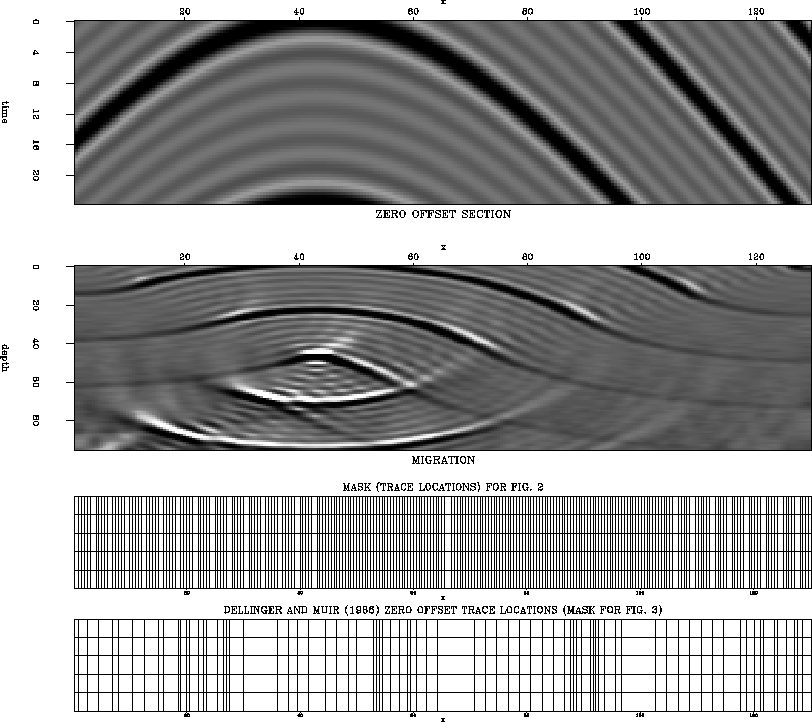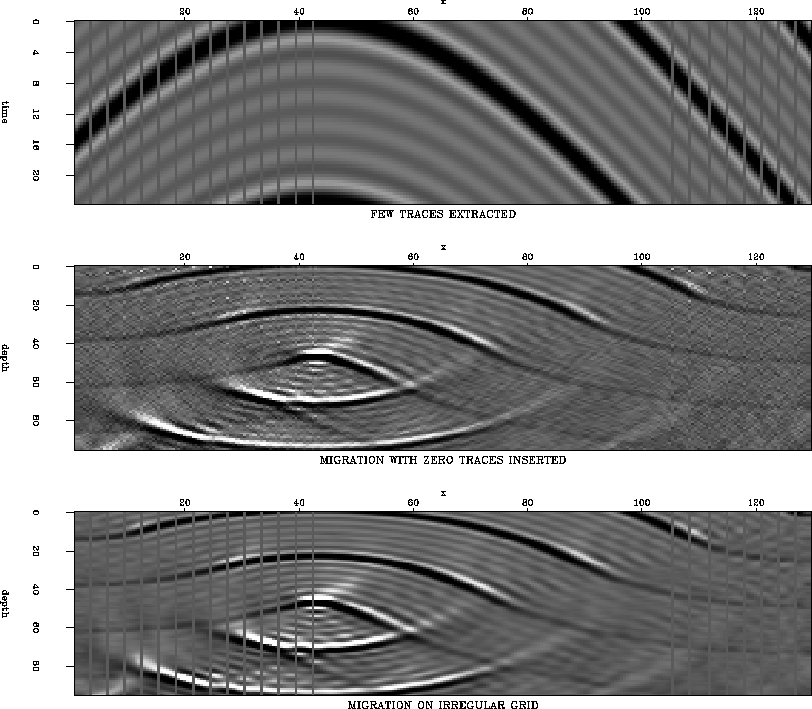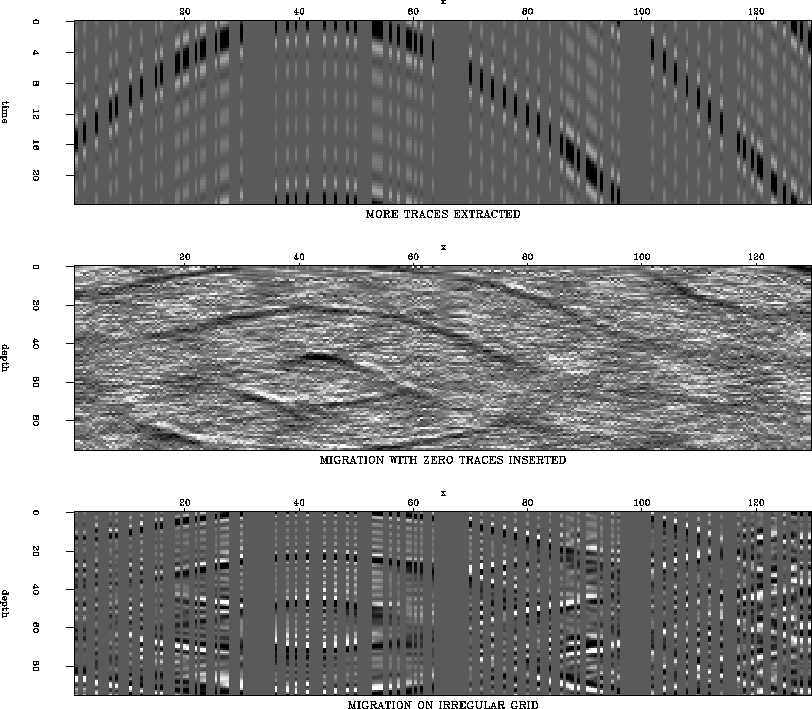




Next: Dealing with the spurious
Up: Vlad: Irregular data migration
Previous: Implementation of a 2D,
I examined the SMM results on a simple synthetic dataset. I chose the
one in Claerbout (1999) because it was small, simple,
and the migration result was already known. First, I produced
a surrogate irregular dataset - a zero offset section that was densely
and regularly sampled across the x axis (see Fig. 2, upper
panel). The image was migrated with the SMM code, as if it were a irregularly
sampled dataset. Only the numerical values of the traces' coordinates
were making it regular; the code was the same as for the truly
irregular cases. The result is displayed in the middle panel of
Fig. 2. The input data was ``made'' irregular by applying
masks (shown in the bottom part of Fig. 2). SMM was
performed on the traces present in the mask. For comparison, zero
traces were introduced at the locations that were not present in the
masks and surrogate irregular migration was
performed.
Fig. 3 shows the input data (top panel), the
zero-traces inserted migration (middle panel) and the SMM (bottom
panel). The irregularity introduced by the mask is mild (the sixth
trace has been eliminated in two regions). Inserting zero traces and
imaging on a regular grid introduces noise farther away from the
missing traces as depth increases. Overall, the image is full of
incoherent high-frequency noise. Instead, the SMM result introduces no
such problems. Even if the jump in sampling rate is large at the place
of the missing traces (the step becomes  instead of dx),
the reflections off the side of the grid are minor. This makes me believe
that for jumps in the grid step of the order of half of dx and under,
the artifacts would be negligible.
instead of dx),
the reflections off the side of the grid are minor. This makes me believe
that for jumps in the grid step of the order of half of dx and under,
the artifacts would be negligible.
Fig. 4 shows the effect of severe irregularities.
Both images are severely affected. The S/N ratio of
the zero-traces inserted surrogate irregular migration result is
lowered to the limit of interpretablity, and any mistake while
interpolating the traces (if we interpolate instead of inserting zero
traces) would probably have severe effects as well. The SMM result is
plagued by strong spurious reflections, but we notice that these
are: a) localized, and b) highly coherent and dipping in the opposite
direction from the true local dips. These are prone to filtering
with a reasonable apriori assumption about the direction of the dip,
and can be obtained as well from unmigrated data. The SMM image overall
is crisp and interpretable. The fact that the incoherent noise has not
been increased is particularly important because input datasets already
suffer from a S/N problem, such as those in crustal seismology.
init
Figure 2 Input data from
Claerbout (1999), its surrogate irregular  migration and the sampling masks used for creating irregularly sampled
datasets
migration and the sampling masks used for creating irregularly sampled
datasets




 midtk
midtk
Figure 3 Input data (top panel), migration
with zero-traces inserted (middle panel) and the SMM (bottom
panel)




 reflgrid
reflgrid
Figure 4 Input data (top panel), migration
with zero-traces inserted (middle panel) and the SMM (bottom
panel)










Next: Dealing with the spurious
Up: Vlad: Irregular data migration
Previous: Implementation of a 2D,
Stanford Exploration Project
6/8/2002
![]() instead of dx),
the reflections off the side of the grid are minor. This makes me believe
that for jumps in the grid step of the order of half of dx and under,
the artifacts would be negligible.
instead of dx),
the reflections off the side of the grid are minor. This makes me believe
that for jumps in the grid step of the order of half of dx and under,
the artifacts would be negligible.


